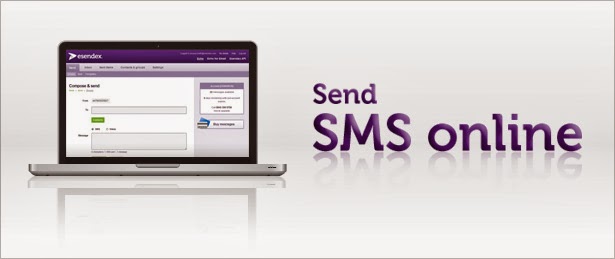SMS Online Gratis, Free Online SMS
Short Message Service (SMS) is a text messaging service component of phone, web, or mobile communication systems, using standardized communications protocols that allow the exchange of short text messages between fixed line or mobile phone devices.
SMS is the most widely used data application in the world, with 3.6 billion active users, or 78% of all mobile phone subscribers. The term "SMS" is used as an acronym for all types of short text messaging and the user activity itself in many parts of the world. SMS is also employed in direct marketing, known as SMS marketing.
SMS as used on modern handsets originated from radio telegraphy in radio memo pagers using standardized phone protocols. These were defined in 1985 as part of the Global System for Mobile Communications (GSM) series of standards as a means of sending messages of up to 160 characters to and from GSM mobile handsets. Though most SMS messages are mobile-to-mobile text messages, support for the service has expanded to include such other mobile technologies as ANSI CDMA networks and Digital AMPS, as well as satellite and landline networks.
Adding text messaging functionality to mobile devices began to gain traction in the mobile communication services community in the early 1980s. The first action plan of the CEPT Group GSM was approved in December 1982, requesting "The services and facilities offered in the public switched telephone networks and public data networks... should be available in the mobile system" This plan included the exchange of text messages either directly between mobile stations, or transmitted via Message Handling Systems widely in use at that time.
The SMS concept was developed in the Franco-German GSM cooperation in 1984 by Friedhelm Hillebrand and Bernard Ghillebaert. The innovation in SMS is Short. The GSM is optimized for telephony, since this was identified as its main application. The key idea for SMS was to use this telephone-optimized system, and to transport messages on the signaling paths needed to control the telephone traffic during time periods when no signaling traffic existed. In this way, unused resources in the system could be used to transport messages at minimal cost. However, it was necessary to limit the length of the messages to 128 bytes (later improved to 140 bytes, or 160 seven-bit characters) so that the messages could fit into the existing signaling formats.
This concept allowed SMS to be implemented in every mobile station by updating its software. This concept was instrumental for the implementation of SMS in every mobile station ever produced and in every network from early days. Hence, a large base of SMS capable terminals and networks existed when the users began to utilize the SMS. A new network element required was a specialized short message service center, and enhancements were required to the radio capacity and network transport infrastructure to accommodate growing SMS traffic.


